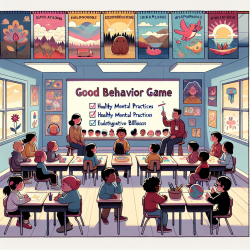Introduction
The PAX Good Behaviour Game (PAX-GBG) is an evidence-based classroom intervention designed to improve student behavior and mental health outcomes. A recent study explored its implementation in First Nations Grade 1 classrooms in Manitoba, revealing both the potential benefits and challenges of adapting this program to Indigenous contexts. This blog delves into the study's findings and offers insights for practitioners looking to enhance their skills and create positive outcomes for children.
The Power of PAX-GBG
Participants in the study reported that PAX-GBG fosters a positive classroom environment where students feel included, recognized, and empowered. The program's structured activities, such as Granny’s Wacky Prizes and Tootles, encourage students to collaborate and exhibit desired behaviors. Teachers noted improvements in student self-regulation, teamwork, and respect, which are crucial for creating a nurturing learning atmosphere.
Challenges in Implementation
Despite its benefits, the study identified several barriers to the consistent use of PAX-GBG in First Nations schools. High teacher turnover, lack of ongoing training, and developmental challenges among students were significant obstacles. Additionally, cultural and contextual adaptations were necessary to make the program more relevant and effective for Indigenous communities.
Recommendations for Success
- Enhance Training: Provide more comprehensive and accessible training for teachers, including in-school demonstrations and refresher courses.
- Cultural Adaptations: Incorporate Indigenous traditions, languages, and culturally relevant rewards to make PAX-GBG more relatable and effective.
- Community Engagement: Involve parents, elders, and community leaders in the program to foster a supportive environment and enhance communication between schools and families.
- Expand Program Reach: Consider implementing PAX-GBG across different grade levels to build a strong foundation of positive behavior from an early age.
Conclusion
The PAX Good Behaviour Game holds promise for improving classroom dynamics and student outcomes in First Nations communities. However, successful implementation requires attention to cultural context, consistent training, and community involvement. By addressing these factors, practitioners can harness the full potential of PAX-GBG to create positive, lasting change for Indigenous children.
To read the original research paper, please follow this link: School personnel and community members’ perspectives in implementing PAX good behaviour game in first nations grade 1 classrooms.










